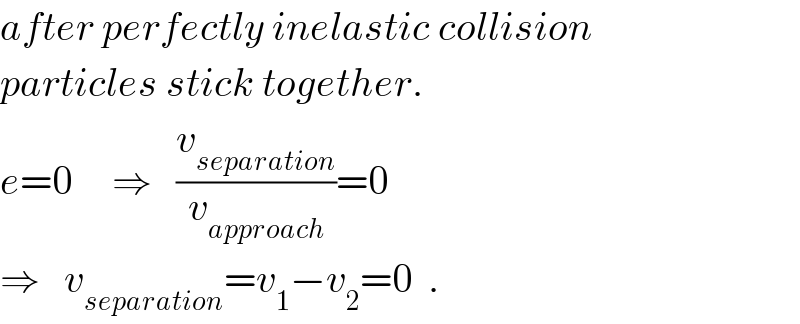
Question and Answers Forum
Question Number 33239 by Tinkutara last updated on 13/Apr/18

Answered by ajfour last updated on 14/Apr/18
![2[mucos ((α/2))]=(2m)((u/2)) ⇒ cos ((α/2))=(1/2) ⇒ α = 120° .](Q33324.png)
Commented by Tinkutara last updated on 15/Apr/18
But why after collision particles will stick together? Because components of velocities normal to Line of Impact will remain unchanged.
Commented by ajfour last updated on 15/Apr/18

Commented by Tinkutara last updated on 15/Apr/18
But isn't that only in 1D and not in 2D?
Commented by ajfour last updated on 15/Apr/18

Commented by Tinkutara last updated on 15/Apr/18
Thank you very much Sir! I got the answer. ��������
